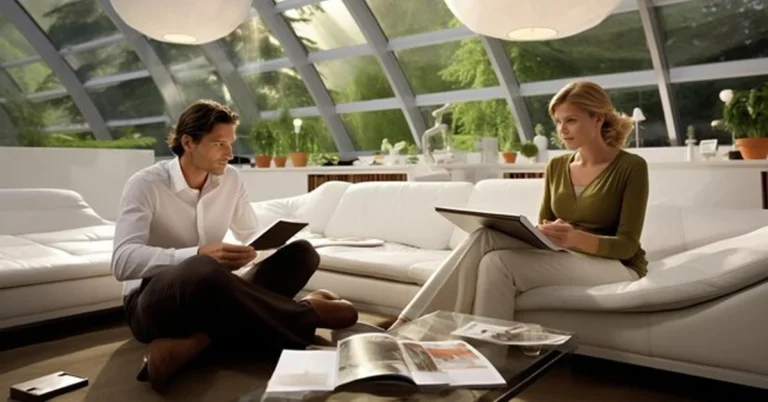Interiorscaping is the art and science of designing indoor environments with plants and greenery. It involves incorporating live plants into interior spaces to enhance aesthetic appeal, improve air quality, and create a healthier, more inviting atmosphere. Whether it’s a home, office, or commercial space, interiorscaping provides numerous benefits, including mental well-being and increased productivity.
TRENDING
Bioptic Telescopic What Is It And How It Improves Vision
Benefits Of Interiorscaping
Improves Air Quality
Plants act as natural air purifiers by removing toxins such as formaldehyde, benzene, and carbon monoxide. Common interiorscaping plants like peace lilies, snake plants, and pothos are known to filter out harmful pollutants and improve indoor air quality.
Enhances Mood and Reduces Stress
Greenery has a calming effect, reducing stress levels and promoting relaxation. Research has shown that being around plants can lower blood pressure, reduce anxiety, and improve overall mental health.
Boosts Productivity and Creativity
Workspaces with indoor plants tend to foster creativity and efficiency. Employees working in green environments report higher job satisfaction and increased concentration levels.
Adds Aesthetic Value
Interiorscaping transforms dull spaces into vibrant, inviting areas. A well-planned green interior enhances visual appeal, making rooms more dynamic and appealing.
Regulates Humidity and Temperature
Plants help maintain humidity levels by releasing moisture into the air through transpiration. This process can naturally cool down indoor spaces during warm seasons while preventing dryness in colder months.
Essential Elements Of Interiorscaping
Plant Selection
Choosing the right plants is crucial for successful interiorscaping. Some factors to consider include light requirements, maintenance needs, and aesthetic compatibility with the space. Popular choices include:
- Low-light plants: Snake plant, ZZ plant, pothos
- Air-purifying plants: Spider plant, aloe vera, bamboo palm
- Statement plants: Fiddle-leaf fig, monstera, rubber plant
Container and Planter Design
Planters should complement the interior decor and provide adequate drainage. Modern interiorscaping trends feature stylish ceramic pots, hanging baskets, and vertical garden installations.
Lighting Considerations
Natural light is ideal for plant growth, but not all spaces have sufficient sunlight. In such cases, artificial grow lights can be used to support plant health and growth.
Arrangement and Placement
Proper placement of plants is essential for both aesthetic appeal and plant survival. Common placement strategies include:
- Cluster arrangements: Grouping plants of different sizes for visual depth
- Focal point plants: Using a large plant as a centerpiece
- Hanging plants: Adding greenery to vertical spaces for a unique look
Popular Interiorscaping Trends
Biophilic Design
This trend emphasizes the connection between humans and nature. It integrates plants with architecture to create spaces that mimic natural environments.
Living Walls and Vertical Gardens
Green walls are a fantastic way to incorporate plants into small spaces. These installations not only enhance aesthetics but also improve air quality and provide insulation.
Moss Walls and Frames
Preserved moss walls require minimal maintenance while adding a lush, organic touch to interiors.
Edible Interiorscaping
Growing herbs and small vegetables indoors is becoming popular. Kitchen gardens with basil, mint, and parsley provide fresh ingredients while beautifying the space.
How To Maintain An Interiorscape
Regular Watering and Feeding
Each plant has specific watering needs. Overwatering or underwatering can be detrimental, so it’s essential to understand individual plant requirements. Fertilizing plants periodically ensures proper growth.
Pest Control
Indoor plants are prone to pests such as spider mites and aphids. Using organic insecticides and wiping leaves regularly can help keep pests at bay.
Pruning and Trimming
Trimming dead leaves and stems promotes healthier growth and keeps plants looking their best.
Rotating Plants
Changing plant placement ensures even light exposure and prevents plants from leaning in one direction.
Choosing The Right Interiorscaping Service
If you want a professionally designed interiorscape, hiring an expert service can be beneficial. Consider the following when selecting a service provider:
- Experience and expertise
- Portfolio of past projects
- Maintenance services offered
- Budget and pricing
Conclusion
Interiorscaping is more than just decorating with plants; it’s a way to transform indoor spaces into healthier, more beautiful environments. By incorporating the right greenery, following maintenance tips, and embracing modern trends, anyone can enjoy the benefits of interiorscaping. Whether for a home or office, greenery enhances both the ambiance and the well-being of its occupants.
ALSO READ: What Was The Role Of Tamachichi And Yamacraw In Colonial Georgia?
FAQs
What is interiorscaping?
Interiorscaping is the practice of designing and incorporating live plants into indoor environments to improve aesthetics, air quality, and overall well-being.
What are the best plants for interiorscaping?
Some of the best interiorscaping plants include snake plants, pothos, fiddle-leaf figs, spider plants, and ZZ plants, as they are low-maintenance and air-purifying.
How often should interiorscape plants be watered?
Watering frequency depends on the plant type and environment. Most indoor plants require watering once a week, but succulents and cacti need less frequent watering.
Can interiorscaping help reduce stress?
Yes, studies show that being around plants can reduce stress, improve mood, and enhance productivity, making interiorscaping beneficial for mental well-being.
Do interiorscaping plants require natural light?
While natural light is ideal, many interiorscaping plants thrive under artificial grow lights, making them suitable for spaces with limited sunlight.

